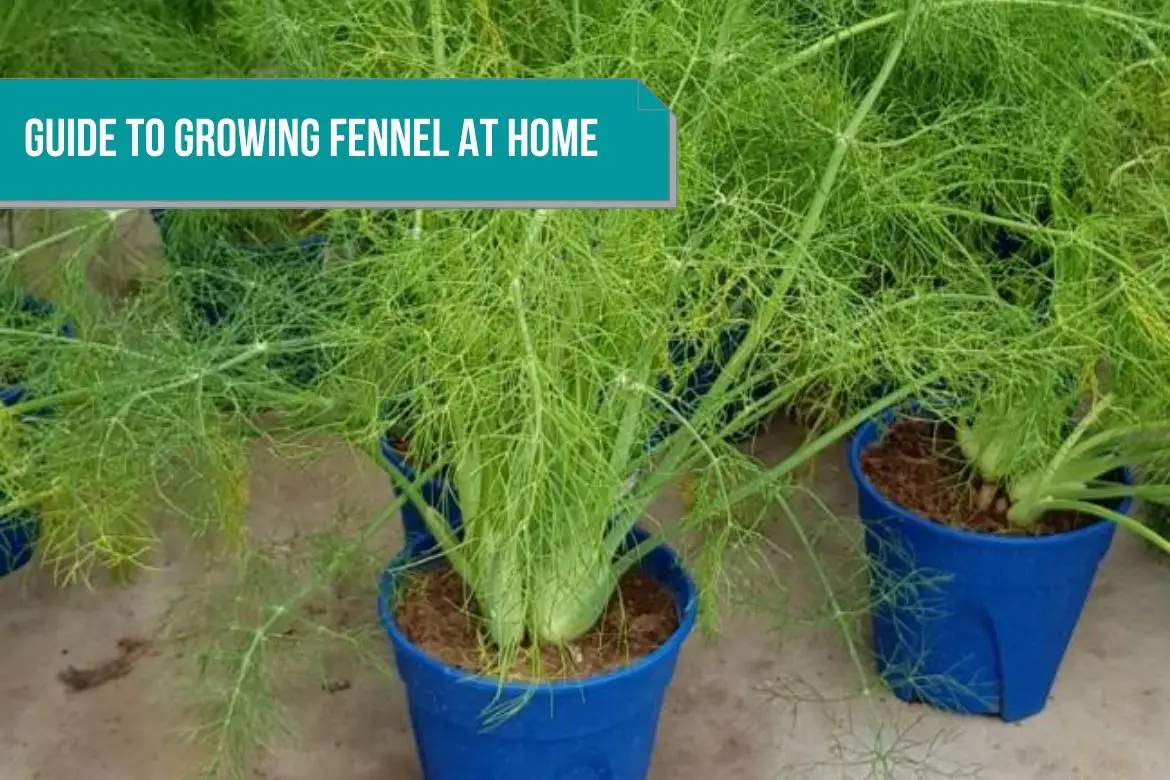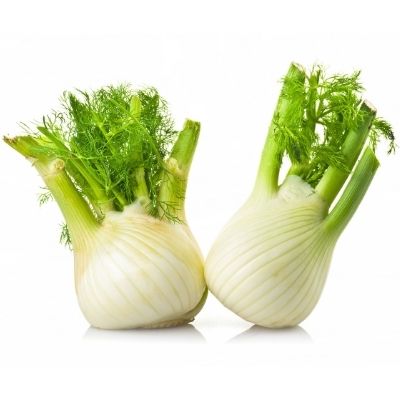
Botanical name : Foeniculum vulgare
Flavor Profile : Mild sweet, mild spicy and bitter and anise-like flavor
Fennel aka Foeniculum vulgare is a perennial, aromatic plant. Fennel is used for both medicinal and culinary purposes.
It is native to Southern Europe and the Mediterranean region. Eventually, it spread further east and farther north in Europe. It has now been domesticated and cultivated worldwide.
Fennel bulbs, leaves, and seeds are widely used in many culinary traditions around the world.
Fennel seeds are ridged, aromatic, and oblong or ellipsoidal in shape. The seed, an anise-flavored spice, is brown or green in color when fresh, and slowly turns gray as it ages.
The bulb is crisp and hardy and is consumed as a vegetable (sautéed, stewed, braised, grilled or even raw).
The leaves are used as garnish in many cuisines.
There are 2 types of fennel: Herb fennel (sweet fennel) and vegetable fennel (Florence fennel, Finocchio).
This growing guide is for sweet fennel.
Varieties of Fennel
Herb fennel
- Rubrum
- Dulce
- Sweet fennel
Vegetable fennel
- Cantino
- Mantavo
- Rhondo
- Victoria
Health benefits of Fennel
Fennel seeds have stimulant and carminative properties. As well as cholera, bile, nervous disorders, coughs and colds, diarrhea, dysentery, and constipation, they are also effective in treating diseases of the chest, lung, spleen, and kidneys.
It is used in indigenous medicine for increasing lacteal secretion by infusing the seeds in hot water.
Fennel seeds aid in weight loss and prolong life.
The seeds of the fennel plant are used as a remedy for snakebites and scorpion stings.
Fennel essential oil has been reported to possess estrogen stimulating properties, making it useful for treating postmenopausal syndrome (PMS) and regulating the menstrual cycle.
As a galactagogue, it helps a breastfeeding mother produce more milk. Fennel may promote breast tissue growth due to phytoestrogens present in the plant.
Cosmetic creams, body lotions, and moisturizers use this ingredient due to its antimicrobial properties.
Please refer nutrition facts of fennel for more details
How to grow Fennel indoors
Fennel is a cool weather crop and grows best in spring and fall.
Fennel plant produces a taproot. Making it tricky to get transplanted. In case you are trying to transplant the plant, do it early enough so that you don’t disturb the root.
As it is susceptible to frost at the flowering stage, its gardening should be avoided in frost-prone areas. Container gardening has the advantage of moving the plant indoors in a controlled environment.
Plant size
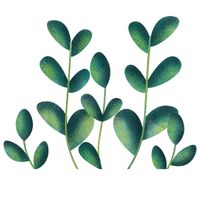
Herb fennel : 4 – 6 feet (120 – 180 cm, 48 – 72 inches)
Vegetable/Florence fennel : 2 feet (60 cm, 24 inches)
Container / pot Size

12 inches (30 cm approx) wide and Deep at least.
Refer how to choose the right container for your indoor plants for more details.
Sunlight

Full Sun. Long, sunny days are ideal for fennel.
However, it can also be grown in partial shade. In this case, yield will be less.
A temperature of 59-68 F (15-20 C) is considered as optimal for fennel plant.
Fennel seed production is higher when the weather is dry and cold.
For best results in growing fennel indoors, place the container near a large south facing window. Or you can place the container near east or west facing windows or windowsills. Placing under a skylight under direct sun is also a good option.
Refer Best locations and Light requirements for indoor plants for more details.
Soil

Well drained, light and rich in organic matter potting mix.
make sure that the potting mix you choose doesn’t have high sand content. Fennel plant does not do well in sandy textured soil.
Fennel thrive on a soil with pH range 6.5 to 8.
You can mix compost in the potting mix in the ration of 50:50.
Please refer How to get the right potting mix for your container plant for more details.
Sowing
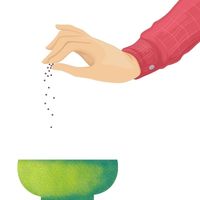
Before sowing the fennel seeds, soak the seeds in water for 48-72 hours. This will increase the chances of germination.
You can either Plant seeds 1/4th an inch deep in the potting mix or even just drop the seeds over the potting mix. Seedlings will grow in both the cases. The seeds will germinate in 6 – 10 days.
The optimum temperature for seed germination is 68-84 degree Fahrenheit (20-29 degree Celsius).
As mentioned earlier, because of the deep taproot of fennel plant, it becomes tricky to transplant the seedlings. If you plant to transplant the plants anyways, transplant the young plants when they are 20-30 days old. At this age, the roots are not that deep. Stick to a permanent big container if you can.
Keep the soil moist at the time of sowing the fennel seeds. Fennel seeds prefer dark area to germinate.
You can also use root division method to propagate fennel plants.
Quick tip: At the time of sowing you can cover the potting soil with wet paper towel or mulch. This will help in reducing the moisture loss specially in hot weather.
Watering
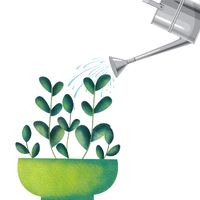
Fennel is a long duration crop. It requires more watering as compared to other seed producing plants/herbs. Specially, at the time of harvesting, replanting, during drought and before it establishes completely.
After establishment, fennel plant is not that finicky for water. Its a fairly drought resistant plant.
Its crucial to have good drainage system in the container along with the good drainage qualities of the potting mix. Fennel has deep taproots. Ensuring good drainage of the container will prevent the deep roots from rotting.
Refer How to make drainage holes on potting container for more details.
Harvesting

Fennel takes 100-120 days to completely mature and have a life cycle of 2 years.
How ever you can harvest the leaves before the full maturity has been attained.
Make sure that you don’t harvest more than 1/3 of the plant leaves.
Always water the plant after it is harvested to stimulate regrowth.
Once the flowers have bloomed, you will see green colored fennel seeds. In about 1-2 weeks, these seeds will turn brown. Harvest the seeds by cutting the flower.
Plant care
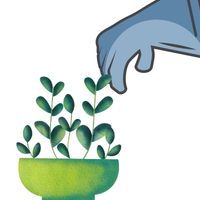
When fennel plant is exposed to temperatures above 77 F (25 C) for an extended period of time, fennel is typically delayed in its development, leading to premature flowering in young plants and low seed production in mature plants.
Self-seeding occurs readily in fennel. Remove flowers to control the seed production.
Although crop development requires a warm climate, high winds during maturity can break the seeds and very hot wind during flowering reduces seed setting.
Seed yields and the quality of the produce are enhanced when the weather is dry and moderately cool during the seed formation stages.
At the time of flowering and seed formation, cloudy weather and high humidity increase the chances of aphid infestation and infection with Ramularia blight disease.
During the maturity period, rainfall deteriorates the quality of produce.
SUBSTITUTES FOR FENNEL IN THE KITCHEN
Leaves
1. Cilantro
2. Dill
3. Parsley
Stalks
1. Bok Choy
2. Onions
3. Celery
How to keep Fennel fresh
Fennel should be kept in the warmer sections of the refrigerator, such as the door.
Whether frozen or dried, fennel leaves lose their flavor.
However, if you still wish to freeze the leaves for future, freeze them in ice trays.
For fennel seeds, harvest the seeds when they are greenish brown in color, or dry them till they achieve grayish brown color. Fennel seeds can be stored for months in a container in kitchen shelf.
Please refer to how to store herbs and spices for more details.
How to use Fennel in the kitchen
Predominantly, the Mediterranean cuisine uses fennel bulbs and fronds, both raw and cooked, in salads, pastas, and vegetable dishes.
Fennel seeds on the other hand are predominantly used in South Asia and in middle eastern dishes.
As a breath freshener, fennel seeds are eaten raw in the Indian Subcontinent sometimes with some sweetener.
The mild anise flavor blends nicely with citrus and other fruits, making it a great addition to smoothies and juices.
You can cook fennel stems alongside pork roasts or lamb roasts.
Dishes that go well with fennel: Fresh leaves can be used in salads, dips, soup, sauces, dressings, roasts.
Dried seeds are used in curries, stews, teas, herbal drinks, pastries, confectioneries, bread rolls, liquors, pickles.
Preparation of fennel for food: Leaves are used as whole or chopped. Dried seeds are used as whole or crushed or powdered.
Pairing Fennel with food
Seasoning that go well with fennel:
Turmeric, Garlic, mustard nigella, lemon juice, basil, fenugreek, parsley, garlic, oregano, chives, cumin, coriander seeds, ginger, basil, cloves, peppercorns, cayenne, mint, cardamom, cinnamon, thyme, chervil.
Fruits and Vegetables that go well with fennel:
Potatoes ( White Potato, Red Potato, Russet Potato, Purple Potato ), tomatoes, onions, carrots, beets, zucchini, asparagus, cucumber, celery, citrus, Brussels sprouts, Mushrooms (Enoki Mushroom, Morel Mushroom, White Mushroom / Button mushroom, Cremini Mushroom, Portabella Mushroom, Shiitake Mushroom, Maitake Mushroom, Chanterelle Mushrooms, Oyster Mushroom) cabbage ( red cabbage, green cabbage ).
Proteins that go well with fennel:
Fish and seafood, Eggs, goat, lamb, lentils, pork, cheeses, beans, duck, chicken.

